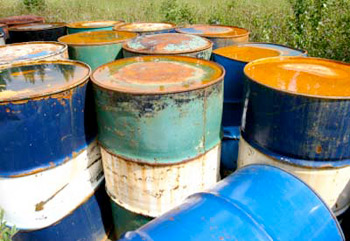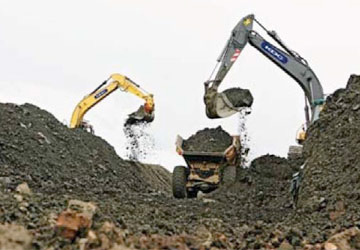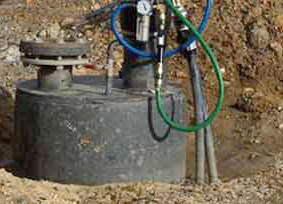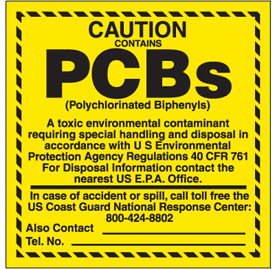
Your Environmental Services Expert Serving California Since 1988

Your Environmental Services Expert Serving California Since 1988
1-800-499-7856
Specialty Services / Demolition
HEAVY-METALS DECONTAMINATION
 A heavy metal is any metal or metalloid of environmental concern. The term originated with reference to the harmful effects of cadmium, mercury and lead, all of which are denser than iron. It has since been applied to any other similarly toxic metal, of metalloid such as arsenic, regardless of density. Commonly encountered heavy metals are chromium, cobalt, nickel, copper, zinc, arsenic, selenium, silver, cadmium, antimony, mercury, thallium and lead. We are certified to handle any situation you may have. Have our experts help you assess and plan.
A heavy metal is any metal or metalloid of environmental concern. The term originated with reference to the harmful effects of cadmium, mercury and lead, all of which are denser than iron. It has since been applied to any other similarly toxic metal, of metalloid such as arsenic, regardless of density. Commonly encountered heavy metals are chromium, cobalt, nickel, copper, zinc, arsenic, selenium, silver, cadmium, antimony, mercury, thallium and lead. We are certified to handle any situation you may have. Have our experts help you assess and plan.
Heavy metals are found naturally in the earth and become concentrated as a result of human-caused activities. Common sources are from mining and industrial wastes, vehicle emissions, lead-acid batteries, fertilizers, paints and treated woods. Lead is the most prevalent heavy-metal contaminant.
 Soils contaminated by heavy metals can be remediated by one or more of the following technologies: isolation; immobilization; toxicity reduction; physical separation; or extraction. Isolation involves the use of caps, membranes or below-ground barriers in an attempt to quarantine the contaminated soil. Immobilization aims to alter the properties of the soil so as to hinder the mobility of the heavy contaminants.
Soils contaminated by heavy metals can be remediated by one or more of the following technologies: isolation; immobilization; toxicity reduction; physical separation; or extraction. Isolation involves the use of caps, membranes or below-ground barriers in an attempt to quarantine the contaminated soil. Immobilization aims to alter the properties of the soil so as to hinder the mobility of the heavy contaminants.
Toxicity reduction attempts to oxidize or reduce the heavy metal ions, via chemical or biological means into less toxic or mobile forms. Physical separation involves the removal of the contaminated soil and the separation of the metal contaminants by mechanical means. Extraction is an on- or off-site process that uses chemicals, high-temperature volatilization or electrolysis to extract contaminants from soils. The process or processes used will vary according to contaminant and the characteristics of the site.
HYDROCARBON SOIL REMEDIATION
 Due to the diversity of TPH compounds a range of remediation technologies may be applicable. If an ex-situ approach can be applied then the most common solution is ex-situ bioremediation.
Due to the diversity of TPH compounds a range of remediation technologies may be applicable. If an ex-situ approach can be applied then the most common solution is ex-situ bioremediation.
However. there may be instances where other techniques may be considered such as soil washing or thermal desorption as examples. For LNAPL-impacted sites, recommended solutions include Steam Enhanced Remediation (SER) and Dual Phase Vacuum Extraction (DPVE).
For dissolved-phase contamination methods, include SER, DPVE, Chemical Oxidation, Air Sparge/Vacuum Extraction, In-situ Bioremediation, Reactive Barriers.
We are certified in hazardous material removal and are prepared to deal with any project you may have.
PCB REMEDIATION
 There are legal requirements for the remediation of PCB’s. We maintain a certification in Hazardous Waste Removal to ensure that we are your subject matter experts of any situation you may have. Let us help you determine the best course of action for your situation.
There are legal requirements for the remediation of PCB’s. We maintain a certification in Hazardous Waste Removal to ensure that we are your subject matter experts of any situation you may have. Let us help you determine the best course of action for your situation.
PCBs belong to a broad family of man-made organic chemicals known as chlorinated hydrocarbons. PCBs were domestically manufactured from 1929 until their manufacture was banned in 1979. They have a range of toxicity and vary in consistency from thin, light-colored liquids to yellow or black waxy solids. Due to their non-flammability, chemical stability, high boiling point, and electrical insulating properties, PCBs were used in hundreds of industrial and commercial applications including electrical, heat transfer, and hydraulic equipment; as plasticizers in paints, plastics, and rubber products; in pigments, dyes, and carbonless copy paper; and many other industrial applications.
Although no longer commercially produced in the United States, PCBs may be present in products and materials produced before the 1979 PCB ban. Products that may contain PCBs include:
Transformers and capacitors
Other electrical equipment including voltage regulators, switches, reclosers, bushings and electromagnets
Oil used in motors and hydraulic systems
Old electrical devices or appliances containing PCB capacitors
Fluorescent light ballasts
Cable insulation
Thermal insulation material including fiberglass, felt, foam and cork
Adhesives and tapes
Oil-based paint
Caulking
Plastics
Carbonless copy paper
Floor finish
Today, PCBs can still be released into the environment from poorly maintained hazardous waste sites that contain PCBs; illegal or improper dumping of PCB wastes; leaks or releases from electrical transformers containing PCBs; and disposal of PCB-containing consumer products into municipal or other landfills not designed to handle hazardous waste. PCBs may also be released into the environment by the burning of some wastes in municipal and industrial incinerators. Once in the environment, PCBs do not readily break down and therefore may remain for long periods of time cycling between air, water and soil.
PCBs have been demonstrated to cause cancer, as well as a variety of other adverse health effects on the immune system, reproductive system, nervous system, and endocrine system.
SPECIALTY DEMOLITION
We are a C-61 specialty certified contractor.


